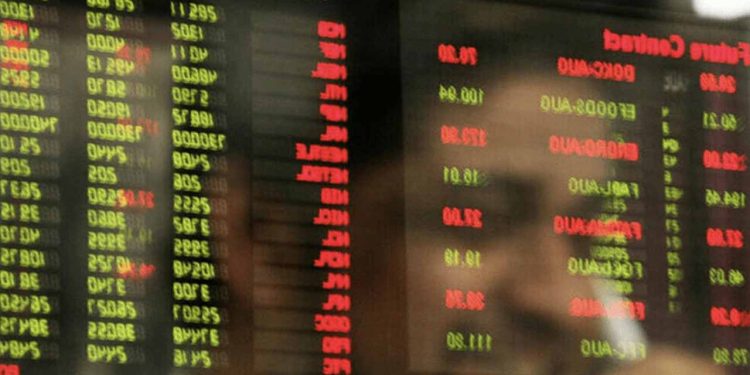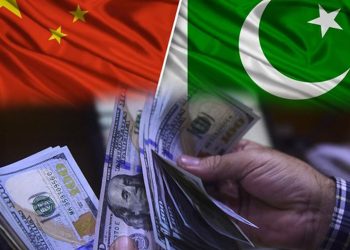Following the State Bank of Pakistan’s decision to maintain the interest rate, the Pakistan Stock Exchange (PSX) witnessed a rebound, providing clarity to the market. The benchmark KSE-100 index surged by nearly 700 points during Tuesday’s trading session.
By 12:45 pm, the benchmark index reached 65,589.83 points, marking an increase of 699.33 points or 1.08%. It peaked at 65,604.85 points earlier in the session.
The market saw widespread buying activity, particularly in index-heavy sectors such as autos, refineries, and oil marketing companies (OMCs), all trading in positive territory.
On Monday, the Monetary Policy Committee (MPC) of the State Bank of Pakistan opted to keep the key policy rate unchanged at 22%, marking the sixth consecutive decision to maintain stability.
In its statement on Monday, the MPC acknowledged a noticeable decline in inflation from the second half of fiscal year 2024, in line with previous expectations. However, it emphasized that despite the significant slowdown in February, inflation levels remain elevated, posing risks to the outlook amid persistently high inflation expectations. Therefore, the committee advocated for a cautious approach and emphasized the importance of continuing the current monetary stance to bring inflation down within the target range of 5–7% by September 2025.
On Monday, the PSX’s benchmark KSE-100 index closed nearly unchanged as investors awaited the monetary policy announcement, settling at 64,890.51 points, up only 74.04 points or 0.11%.
Globally, Tokyo stocks advanced on Tuesday following the Bank of Japan’s decision to raise interest rates for the first time in 17 years, signaling a shift away from its long-standing ultra-loose monetary policy. Additionally, gains were observed in Sydney, Singapore, Taipei, Manila, Jakarta, Bangkok, and Wellington.
However, Hong Kong and Shanghai experienced losses during the session, while Seoul and Mumbai also reported declines. Investors are now focusing on the Federal Reserve’s forthcoming policy decision, with expectations of maintaining rates at a two-decade high, alongside the release of its outlook for the remainder of the year through the “dot plot” projection. The December report indicated a potential for three rate cuts.







